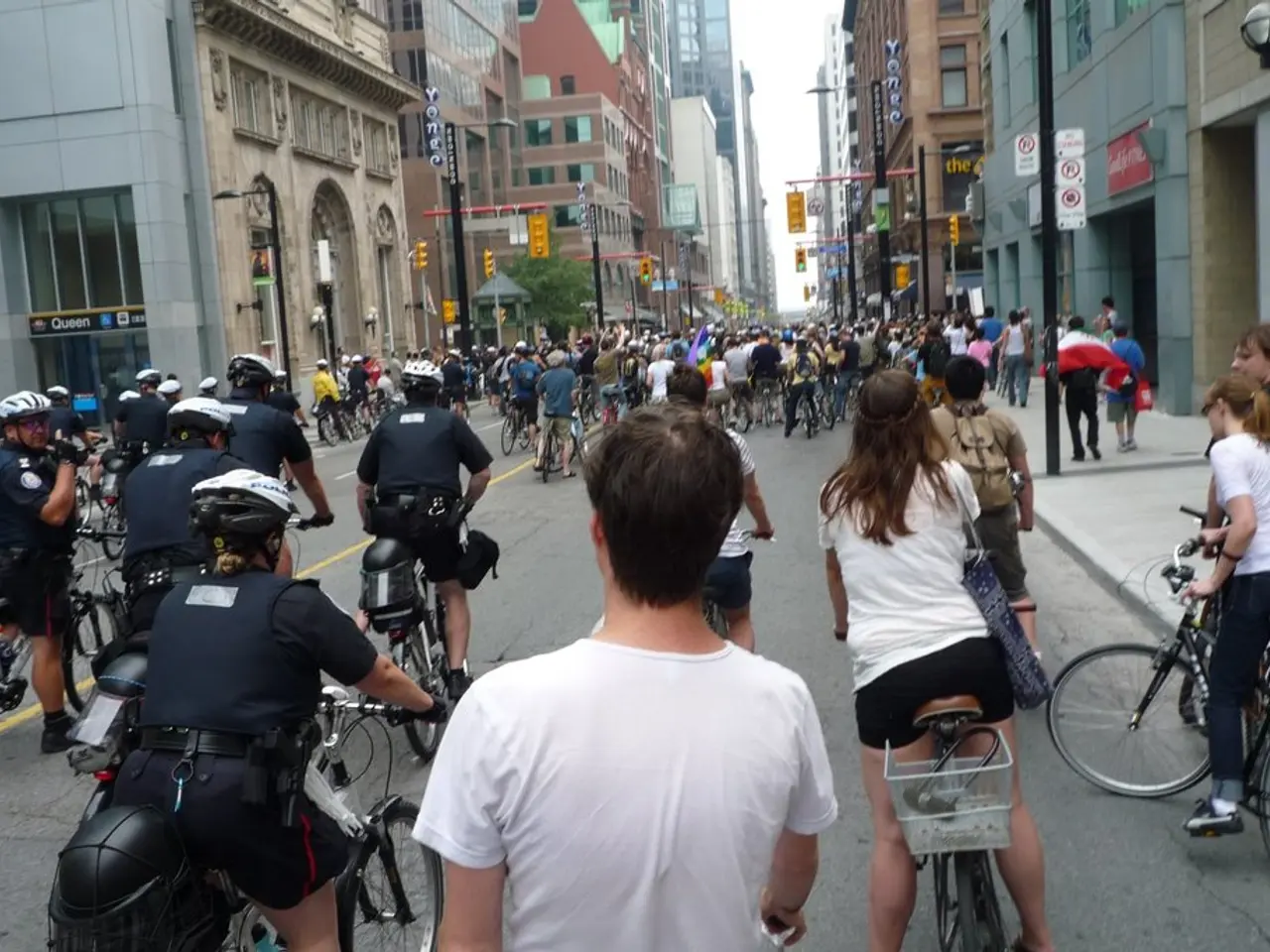Struggles and Benefits of Installing Bicycle Lanes
In the pursuit of promoting sustainable transportation, cities around the world are focusing on improving cycling infrastructure. Here's a look at some key factors to consider when creating a cycling network that ensures safety, cohesion, and attractiveness.
Visible Routes for All
One essential aspect of cycling infrastructure is visibility. In built-up areas, a cycling logo should be printed on the ground every 50 to 100 metres, while in non-built-up areas, the interval should be between 500 to 750 metres. This clear marking helps cyclists navigate their routes with ease.
The Need for Separated Infrastructure
Not every street may have space for a dedicated cycle lane or track, leaving cyclists unprotected when a route ends. In such cases, cycle tracks, which are separated from other traffic through barriers, can provide a perceived sense of safety. However, it's crucial to consider potential issues like maintenance neglect or increased usage by cargo bikes, scooters, or skateboards, which could potentially reduce long-term safety.
Creating a Cohesive Network
A coordinated approach to cycling signage, coloring, and routes is essential for creating a more cohesive network. Having the same kind of infrastructure helps cyclists understand what to expect, making navigation easier and more intuitive.
Addressing Fear of Traffic
Fear of traffic is a significant obstacle to cycling, particularly for women, the elderly, and children. Cycle tracks, with their physical barrier between traffic, are considered particularly important in addressing this issue, as they provide a perceived sense of safety.
Slowing Down Traffic
Slowing down traffic, both speed and volume, is crucial in improving the perception of safety for cyclists. This can be achieved through traffic calming measures like reduced speeds, one-way systems, and redirected car traffic to the hierarchy of busy roads.
Considering Intersections
Intersections are crucial to consider when creating a cycling network, as they expose cyclists to other traffic. Ensuring smooth transitions and clear signage at these points is vital for maintaining safety and ease of navigation.
The Importance of Quality Over Speed
Some cities prioritize rapid construction of cycle tracks, while others focus on quality and attractiveness. While speed can be important, it's equally crucial to ensure that infrastructure is well-designed and maintains a high standard of quality to ensure long-term safety and usability.
Learning from Each Other
Cities can learn from each other's strategies in planning and implementing a cycle network. For instance, Oulu, Finland, became the winter cycling capital due to a stubborn traffic engineer's efforts during the 1970s automation era, while Frankfurt has experienced one of the largest infrastructure changes for cyclists in the last ten years, driven by strong engagement in sustainable mobility.
The Minimum Space Required
For non-traditional bikes or two people to cycle next to each other, a minimum of 1.9 metres is needed. Ideally, cities should allow for a more comfortable 2 metres. Additionally, the minimum space required for a cyclist is a width of 0.9 metres and a headspace of 0.75 metres.
Creating a Hierarchy of Cycling Routes
Creating a hierarchy of cycling routes is essential for a comprehensive cycling plan in a city. Main artery roads with heavy traffic require separate cycle and car infrastructure, while roads with a speed of 50km/hr and high traffic volume may benefit from cycle lanes, while cycle tracks are the best option.
Demonstrating a Commitment
Dedicated cycle routes demonstrate a commitment to cycling and help attract the attention of citizens. Cities like Seville prioritize rapid construction of cycle tracks, while others, like Bern, focus on quality and attractiveness.
Overcoming Scepticism
In some cases, cities may face scepticism from councillors regarding the implementation of cycling infrastructure. Calgary initially built temporary bike tracks to win over bike-sceptic councillors, while other cities rely on determined political figureheads to push cycling through.
The Unique Story of Each City's Cycling Network
Each city's cycling network will have a unique story based on its own strategy and political approach. Regardless of the path taken, the ultimate goal remains the same: to create safer, more cohesive, and more attractive cycling networks that encourage more people to choose sustainable transportation.
Read also:
- Understanding Hemorrhagic Gastroenteritis: Key Facts
- Trump's Policies: Tariffs, AI, Surveillance, and Possible Martial Law
- Expanded Community Health Involvement by CK Birla Hospitals, Jaipur, Maintained Through Consistent Outreach Programs Across Rajasthan
- Abdominal Fat Accumulation: Causes and Strategies for Reduction








